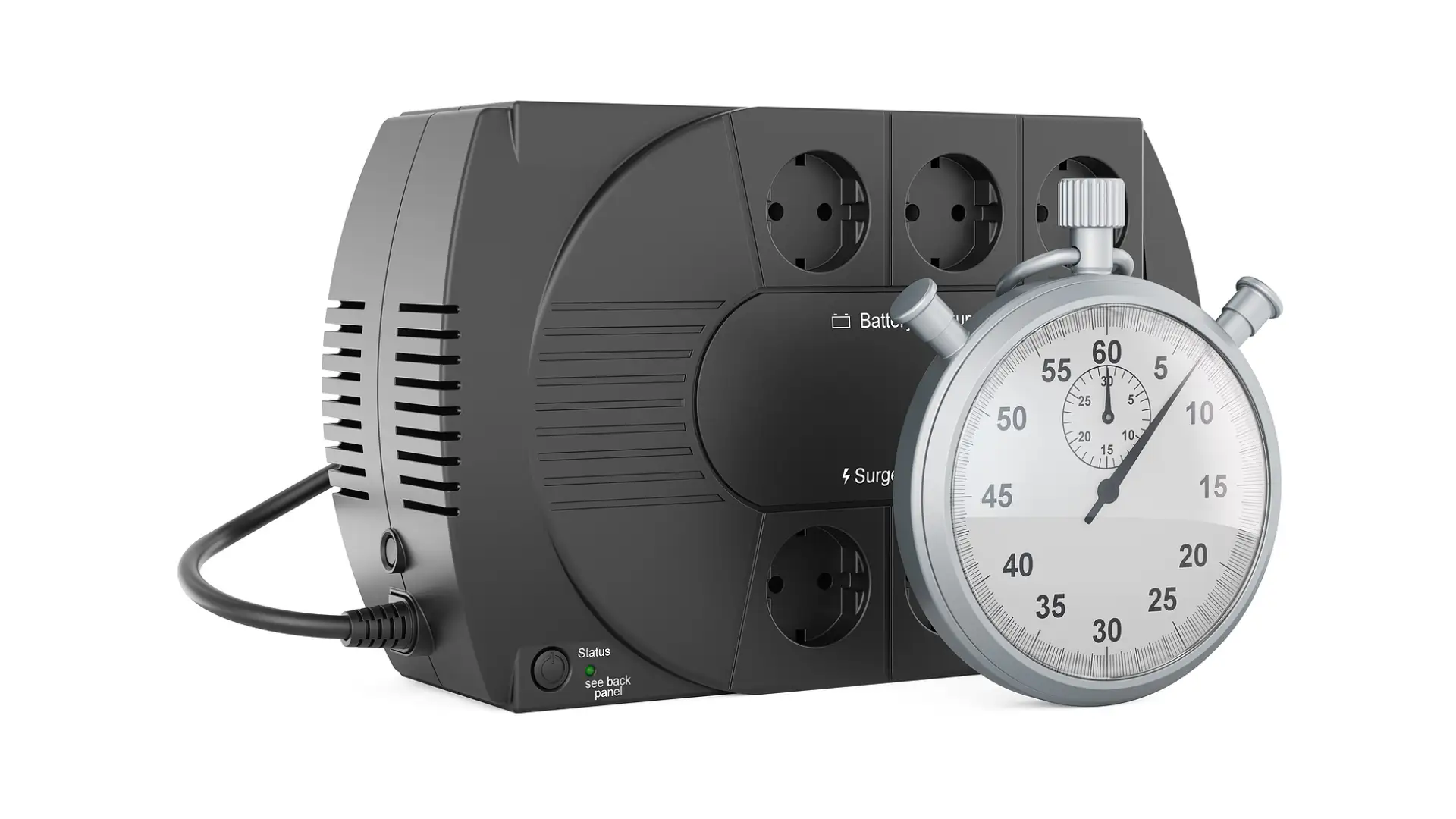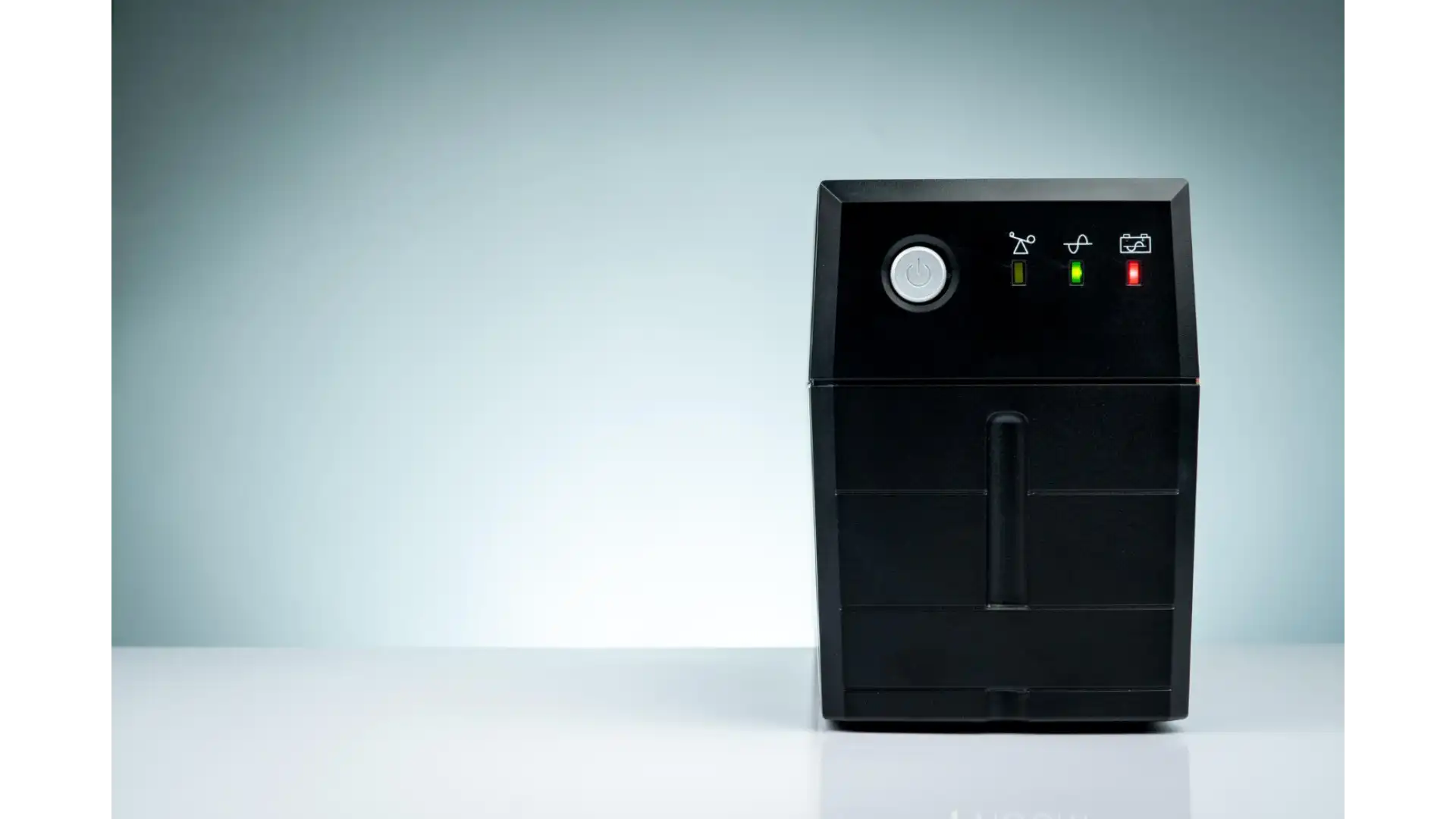
Residential Uninterruptible Power Supply
In today’s digital and energy-dependent world, the significance of maintaining a constant power supply for residential spaces cannot be overstated. Power outages, surges, and brownouts can not only cause inconvenience but can also lead to damage to electronic devices and loss of important data.
This is where a Residential Uninterruptible Power Supply (UPS) system becomes indispensable. This comprehensive guide aims to delve into the essentials of Residential Uninterruptible Power Supply systems, exploring their benefits, types, how they work, factors to consider before buying, and much more.
What is a Residential Uninterruptible Power Supply (UPS)?
A Residential Uninterruptible Power Supply (UPS) is a device that provides emergency power to a load when the input power source, typically the mains power, fails.
A UPS differs from an auxiliary or emergency power system or standby generator in that it will provide near-instantaneous protection from input power interruptions, by supplying energy stored in batteries, supercapacitors, or flywheels.
The on-battery runtime of most Residential Uninterruptible Power Supply systems is relatively short (only a few minutes) but sufficient to start a standby power source or properly shut down the protected equipment.
Importance of Residential Uninterruptible Power Supply
A Residential Uninterruptible Power Supply is crucial for protecting household electronic devices from power surges and providing backup power during outages.
This ensures that essential devices, such as home medical equipment, computers, and networking devices, remain operational, preventing data loss and hardware damage.
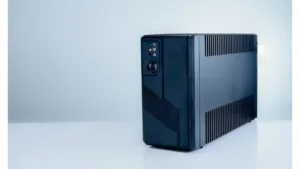
Types of Residential Uninterruptible Power Supply Systems
There are primarily three types of Residential Uninterruptible Power Supply systems, each suited to different needs and applications:
- Standby UPS: Also known as Offline UPS, it is the simplest form of UPS technology. The Standby UPS remains dormant until a power failure occurs, at which point it switches to battery power to provide a short-term power supply.
- Line-Interactive UPS: This type offers more advanced features than the Standby UPS, including voltage regulation. It adjusts minor power fluctuations without switching to battery, making it more efficient for residential use where power sags and surges are common.
- Double-Conversion (Online) UPS: The most advanced and reliable type, providing continuous, clean power regardless of the condition of incoming power. It is ideal for protecting high-value electronic equipment and sensitive devices from all types of power issues.
How Does a Residential Uninterruptible Power Supply Work?
A Residential Uninterruptible Power Supply (UPS) system is a vital device for maintaining a consistent power supply to your home's electronics and appliances during power disruptions. Here's a detailed breakdown of how a Residential UPS works, step by step:
- AC to DC Conversion: The UPS is connected to a standard wall outlet and draws power from your home's electrical system. This incoming Alternating Current (AC) power is converted into Direct Current (DC), preparing it for efficient storage in the system's backup battery.
- Charging the Backup Battery: The converted DC power charges the UPS's internal backup battery. This battery is crucial for holding the charge that will be used to power your devices during a power outage. The capacity of the battery directly affects how long the UPS can support your devices without external power.
- Instantaneous Power Switching: In the event of a power outage or fluctuation, the UPS instantly detects the disruption and switches to the DC power stored in its backup battery. This rapid response ensures there is no interruption to the connected devices, protecting them from damage that can be caused by sudden power loss.
- DC to AC Conversion: The DC power from the battery is then converted back into AC power. Since most home electronics and appliances run on AC power, this step is essential for providing a seamless transition, allowing your devices to continue operating smoothly without noticing the power switch.
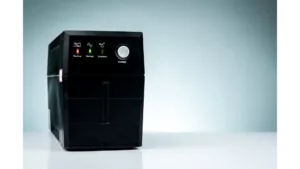
Integrating UPS with Home Automation Systems
The integration of a Residential Uninterruptible Power Supply (UPS) system with home automation platforms represents a significant leap toward smart home management and enhanced power reliability.
This synergy not only simplifies the management of power backup systems but also elevates the functionality and convenience of your home's technology ecosystem.
Here's how integrating your Uninterruptible Power Supply home automation systems can transform your experience and ensure seamless operation during power disruptions.
- Seamless Control
Connect your UPS to a smart home system for real-time monitoring and control over your power backup, accessible from anywhere, providing peace of mind and immediate updates on system status.
- Automated Power Management
Program your home automation to prioritize power distribution during outages, ensuring essential devices remain operational and conserving battery life for the most critical needs.
- Customized Alerts
Receive instant alerts and notifications on your smart devices about UPS status, power outages, and restoration, keeping you informed and prepared to act.
- Safety and Security Enhancement
Keep critical security systems powered during outages and use smart lighting to simulate presence, bolstering home security and safety.
- Future-Proofing
By integrating with home automation, your UPS system is ready to adapt to new technologies and innovations, ensuring your home stays resilient and efficient.
Choosing the Ri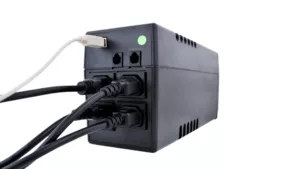 ght Residential Uninterruptible Power Supply
ght Residential Uninterruptible Power Supply
Selecting the appropriate Residential Uninterruptible Power Supply system involves considering several key factors:
- Power Capacity: Determine the total wattage of all devices to be connected to the UPS. Choose a model that can handle at least 20-25% more than this total to ensure reliability under load.
- Battery Runtime: Consider how long you need the UPS to provide power during an outage. Battery runtime varies significantly among models, so select one that meets your minimum requirements.
- Outlets: Ensure the UPS has enough outlets for all your devices. Some models offer both battery-backed and surge-only outlets.
- Features: Look for additional features such as data line protection, USB connectivity, and software management capabilities for added convenience and control.
- Warranty and Support: Check the warranty period and support options. A longer warranty and accessible customer support can provide peace of mind and protection for your investment.
Maintenance and Safety Tips
Maintaining your Residential Uninterruptible Power Supply system is essential for ensuring its longevity and reliability:
- Regular Testing: Periodically test the UPS by simulating a power outage to ensure it switches to battery power as expected.
- Battery Replacement: Be aware of the battery's lifespan and replace it according to the manufacturer's recommendations.
- Perform Regular Maintenance: This includes testing the UPS's functionality, cleaning and inspecting for dust and debris, and updating any associated software.
- Manage the Battery Life: Pay attention to the battery's lifespan, replacing it as needed, and ensure proper disposal of old batteries.
- Be Mindful of Placement and Load: Keep the UPS in a cool, ventilated area, and avoid overloading it beyond its capacity.
- Monitor and Address Issues Promptly: Look out for warning signs, maintain all connections, and employ surge protectors for added security.
- Seek Professional Help When Necessary: For complex systems, professional maintenance can identify and resolve issues not obvious to the average user.
The Impact of Power Quality on Residential UPS Performance: Key Factors
Voltage Fluctuations and Sags
Frequent drops or instability in voltage can cause the UPS to switch to battery power unnecessarily, shortening battery life.
Surges and Spikes
Sudden increases in voltage can harm the UPS and connected devices. UPS systems with built-in surge protection can mitigate these effects.
Harmonic Distortion
Generated by non-linear loads, harmonic distortion can overheat and damage electronics. Advanced UPS models can filter and compensate for this distortion.
Frequency Variations
Deviations from the standard electrical grid frequency can cause UPS malfunction or unnecessary battery usage.
Mitigating Power Quality Issues
Utilizing surge protectors, and power conditioners, and choosing UPS systems with advanced features can help manage power quality problems, ensuring stable UPS performance. Regular UPS maintenance and monitoring are also crucial for addressing power quality issues before they impact performance.
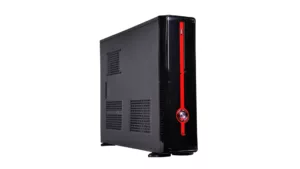
FAQs on Residential Uninterruptible Power Supply Systems
What is a Residential Uninterruptible Power Supply (UPS) System?
A Residential UPS System is a backup power device designed to provide uninterrupted electricity to your home's critical devices and appliances during power outages, surges, or other electrical disturbances.
How do I choose the right UPS for my home?
Consider the total wattage of the devices you need to support, opt for a UPS with a higher capacity to accommodate future needs, assess the battery life, and decide if you need additional features like surge protection or energy-saving modes.
Can a UPS save on electricity costs?
Yes, some UPS systems come with energy-efficient features that minimize power consumption when devices are not actively drawing power, potentially reducing electricity costs.
How can I integrate my UPS with my home automation system?
Integration varies by system, but typically involves connecting your UPS to your home network via Wi-Fi or Ethernet and using compatible software or apps provided by the UPS or home automation system manufacturer.
What are the benefits of integrating a UPS with a home automation system?
Integration allows for real-time monitoring and control of your UPS, automated power management to prioritize essential devices, customized alerts for power events, and enhanced home security during outages.
How often should I replace the battery in my UPS?
The lifespan of a UPS battery varies, but manufacturers typically recommend replacement every 3-5 years. Monitor your UPS for any warning signs of battery failure and consult the user manual or manufacturer's guidance.
Can a UPS protect all the appliances in my home during a power outage?
A UPS can support a limited number of devices, based on its capacity. Prioritize essential devices and appliances to connect to the UPS, considering the system's wattage and battery life limitations.
How can I maintain my UPS to ensure its longevity?
Regular testing, ensuring proper placement with adequate ventilation, updating any software, monitoring load capacity, and adhering to the manufacturer's maintenance recommendations are key to maintaining your UPS.
Are there environmentally friendly UPS options?
Yes, look for UPS systems with high energy efficiency ratings and those using advanced, sustainable battery technologies to reduce environmental impact.
What should I do with my old UPS battery?
Recycle old batteries properly according to local regulations, as they contain materials that can be harmful to the environment if disposed of improperly.
Conclusion
A Residential Uninterruptible Power Supply system is an invaluable asset for any home. It not only protects your electronic devices from power-related damages but also ensures that you remain connected and operational during power outages.
By understanding the types, functionalities, and factors to consider when choosing a UPS, homeowners can make informed decisions that cater to their specific power backup needs. Remember, investing in a Residential Uninterruptible Power Supply is investing in the security and efficiency of your home’s electronic environment.
Source
https://www.usaid.gov/energy/powering-health/system-components/uninterruptible-power-supplies
continue reading
Related Posts
Uninterruptable Power Supplies In today's world, where technology keeps us […]
Uninterruptible Power Supply For Laptop In today's fast-paced digital world, […]
Small Uninterruptible Power Supply In today's digital age, where connectivity […]
